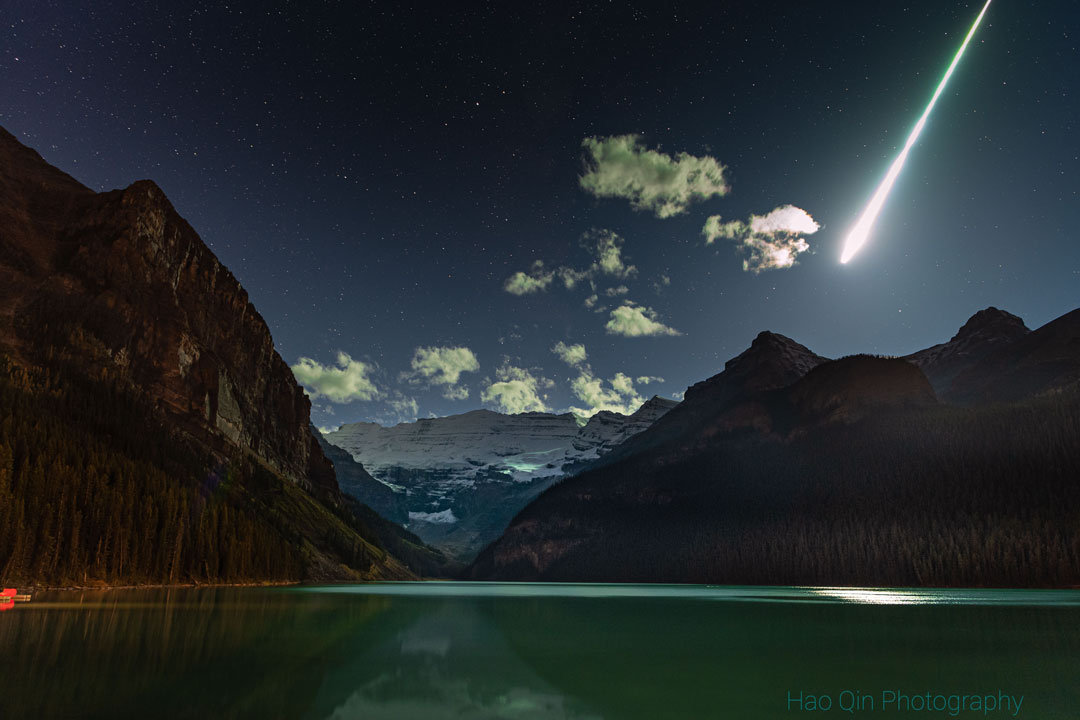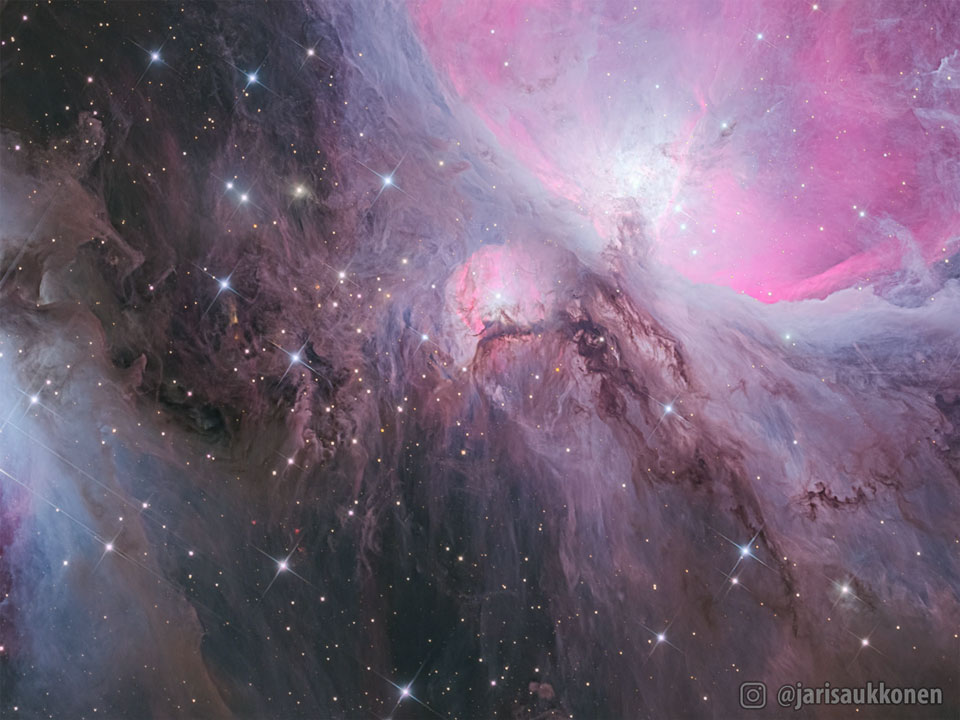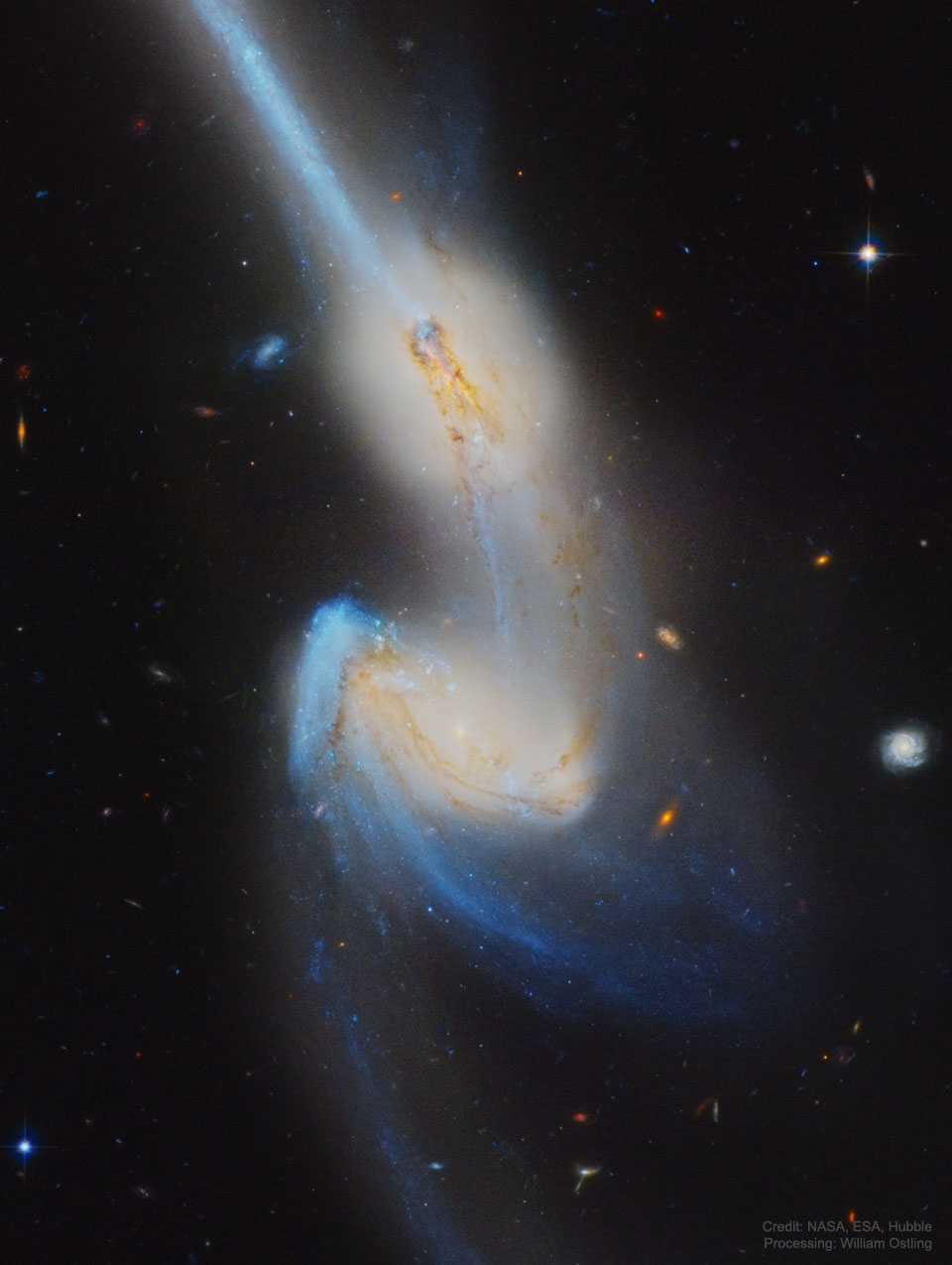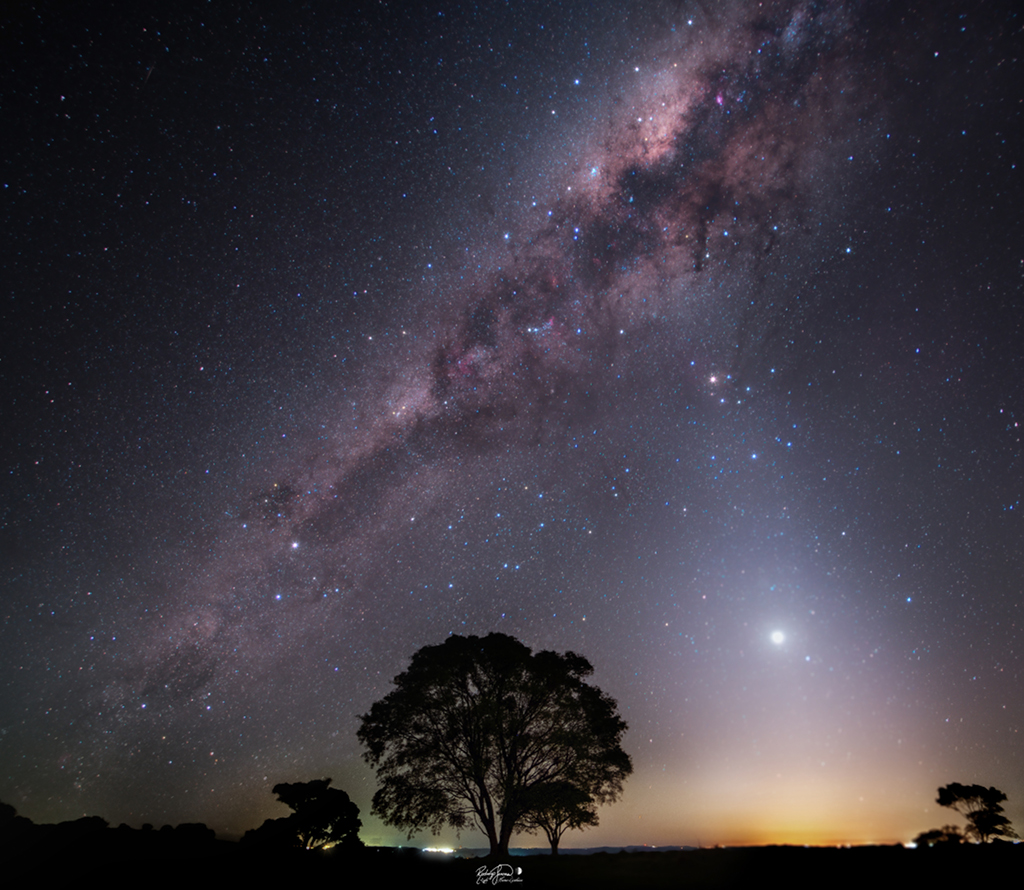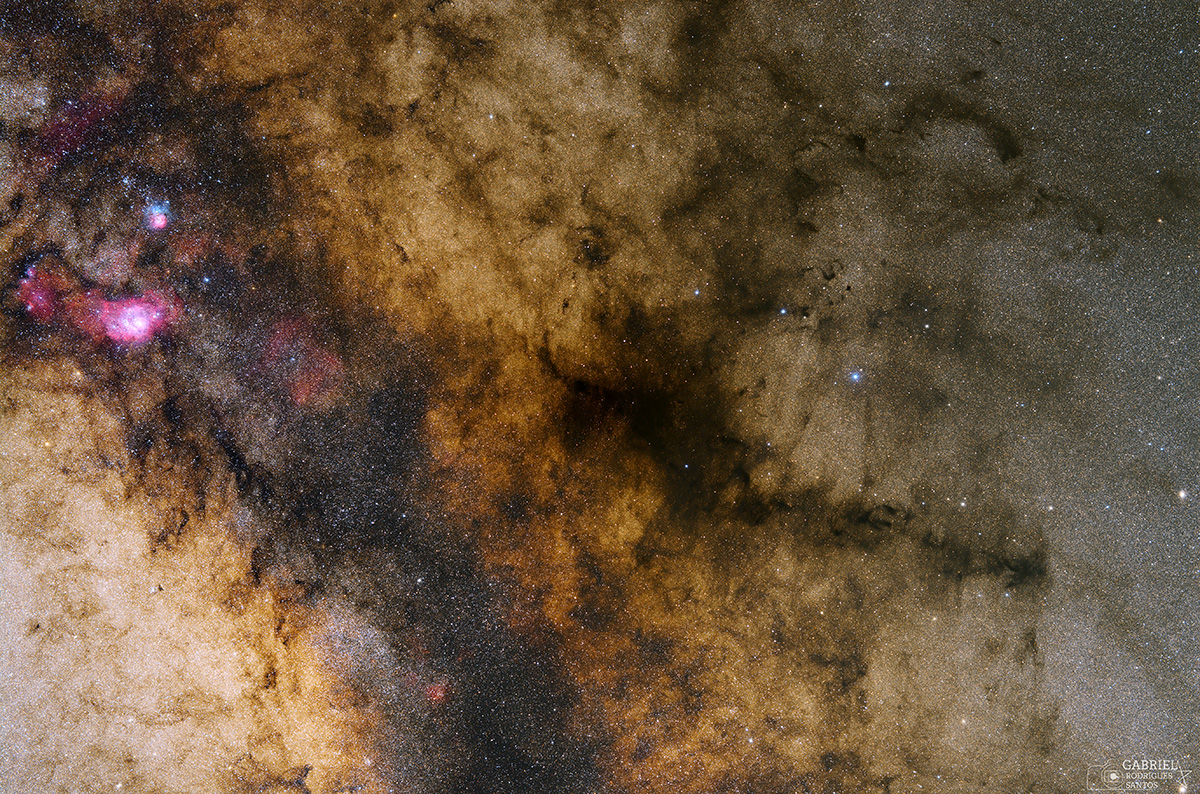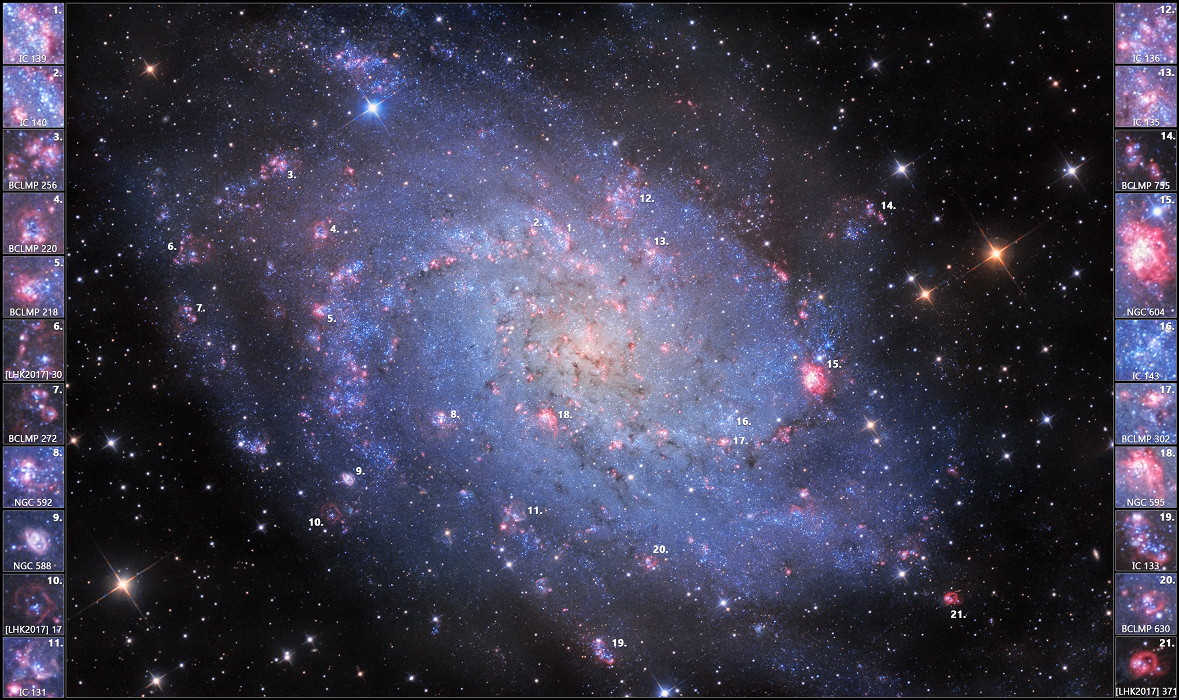Nombre total de pages vues
04/11/2021
03/11/2021
ASTRONOMY - Fireball over Lake Louise
2021 October 12
Image Credit & Copyright: Hao Qin
Explanation: What makes a meteor a fireball? First of all, everyone agrees that a fireball is an exceptionally bright meteor. Past that, the International Astronomical Union defines a fireball as a meteor brighter than apparent magnitude -4, which corresponds (roughly) to being brighter than any planet -- as well as bright enough to cast a human-noticeable shadow. Pictured, an astrophotographer taking a long-duration sky image captured by accident the brightest meteor he had ever seen. Clearly a fireball, the disintegrating space-rock created a trail so bright it turned night into day for about two seconds earlier this month. The fireball has been artificially dimmed in the featured image to bring up foreground Lake Louise in Alberta, Canada. Although fireballs are rare, many people have been lucky enough to see them. If you see a fireball, you can report it. If more than one person recorded an image, the fireball might be traceable back to the Solar System body from which it was ejected.
02/11/2021
ASTRONOMY - Juno Flyby of Ganymede and Jupiter
Video Credit: Images: NASA, JPL-Caltech, SWRI, MSSS;
Animation: Koji Kuramura, Gerald Eichstädt, Mike Stetson; Music: Vangelis
Explanation: What would it be like to fly over the largest moon in the Solar System? In June, the robotic Juno spacecraft flew past Jupiter's huge moon Ganymede and took images that have been digitally constructed into a detailed flyby. As the featured video begins, Juno swoops over the two-toned surface of the 2,000-km wide moon, revealing an icy alien landscape filled with grooves and craters. The grooves are likely caused by shifting surface plates, while the craters are caused by violent impacts. Continuing on in its orbit, Juno then performed its 34th close pass over Jupiter's clouds. The digitally-constructed video shows numerous swirling clouds in the north, colorful planet-circling zones and bands across the middle -- featuring several white-oval clouds from the String of Pearls, and finally more swirling clouds in the south. Next September, Juno is scheduled to make a close pass over another of Jupiter's large moons: Europa.
06/10/2021
ASTRONOMY - M43: Streams of Orion
2021 October 6
Image Credit & Copyright: Jari Saukkonen
Explanation: Where do the dark streams of dust in the Orion Nebula originate? This part of the Orion Molecular Cloud Complex, M43, is the often imaged but rarely mentioned neighbor of the more famous M42. M42, seen in part to the upper right, includes many bright stars from the Trapezium star cluster. M43 is itself a star forming region that displays intricately-laced streams of dark dust -- although it is really composed mostly of glowing hydrogen gas. The entire Orion field is located about 1600 light years away. Opaque to visible light, the picturesque dark dust is created in the outer atmosphere of massive cool stars and expelled by strong outer winds of protons and electrons.
04/10/2021
ASTRONOMY - NGC 4676: When Mice Collide
2021 October 4
Image Credit: NASA, ESA, Hubble; Processing & Copyright: William Ostling (The Astronomy Enthusiast)
Explanation: These two mighty galaxies are pulling each other apart. Known as the "Mice" because they have such long tails, each spiral galaxy has likely already passed through the other. The long tails are created by the relative difference between gravitational pulls on the near and far parts of each galaxy. Because the distances are so large, the cosmic interaction takes place in slow motion -- over hundreds of millions of years. NGC 4676 lies about 300 million light-years away toward the constellation of Bernice's Hair (Coma Berenices) and are likely members of the Coma Cluster of Galaxies. The featured picture was taken with the Hubble Space Telescope's Advanced Camera for Surveys in 2002. These galactic mice will probably collide again and again over the next billion years so that, instead of continuing to pull each other apart, they coalesce to form a single galaxy.
02/10/2021
ASTRONOMY - A Light and Dusty Night
2021 October 2
Image Credit & Copyright: Rodrigo Guerra
Explanation: Posing as a brilliant evening star, Venus lies near the western horizon in this southern hemisphere, early spring, night skyscape. To create the composite view exposures tracking the sky and fixed for the foreground were taken on September 25 from Cascavel in southern Brazil. In view after sunset, Venus appears immersed in a cone of zodiacal light, sunlight scattered from dust along the Solar System's ecliptic plane. In fact from either hemisphere of planet Earth, zodiacal light is most visible after sunset near a spring equinox, (or before sunrise near an autumn equinox) when its luminous arc lies at steep angles to the horizon. Extending above the sunset on this night, the zodiacal light reaches toward rich starfields and immense interstellar dust clouds in the bulge of the central Milky Way. Follow along the Milky Way from the central bulge back toward the horizon and you'll spot the closest star system to the Sun, Alpha Centauri, a mere 4.37
01/10/2021
PRATIQUE - Douleurs articulaires, arthrose, rumatismes
ASTRONOMY - The Central Milky Way from Lagoon to Pipe
2021 October 1
Image Credit & Copyright: Gabriel Rodrigues Santos
Explanation: Dark markings and colorful clouds inhabit this stellar landscape. The deep and expansive view spans more than 30 full moons across crowded star fields toward the center of our Milky Way Galaxy. Cataloged in the early 20th century by astronomer E. E. Barnard, the obscuring interstellar dust clouds seen toward the right include B59, B72, B77 and B78, part of the Ophiuchus molecular cloud complex a mere 450 light-years away. To the eye their combined shape suggests a pipe stem and bowl, and so the dark nebula's popular name is the Pipe Nebula. Three bright nebulae gathered on the left are stellar nurseries some 5,000 light-years distant toward the constellation Sagittarius. In the 18th century astronomer Charles Messier included two of them in his catalog of bright clusters and nebulae; M8, the largest of the triplet, and colorful M20 just above. The third prominent emission region includes NGC 6559 at the far left. Itself divided by obscuring dust lanes, M20 is also known as the Trifid. M8's popular moniker is the Lagoon Nebula.
30/09/2021
ASTRONOMY - The Hydrogen Clouds of M33
2021 September 30
Image Credit & Copyright: Luca Fornaciari
Explanation: Gorgeous spiral galaxy M33 seems to have more than its fair share of glowing hydrogen gas. A prominent member of the local group of galaxies, M33 is also known as the Triangulum Galaxy and lies a mere 3 million light-years away. Sprawling along loose spiral arms that wind toward the core, M33's giant HII regions are some of the largest known stellar nurseries, sites of the formation of short-lived but very massive stars. Intense ultraviolet radiation from the luminous massive stars ionizes the surrounding hydrogen gas and ultimately produces the characteristic red glow. To highlight the HII regions in this telescopic image, broadband data used to produce a color view of the galaxy were combined with narrowband data recorded through a hydrogen-alpha filter, transmitting the light of the strongest hydrogen emission line. Close-ups of cataloged HII regions appear in the sidebar insets. Use the individual reference number to find their location within the Triangulum Galaxy. For example, giant HII region NGC604 is identified in an inset on the right and appears at position number 15. That's about 4 o'clock from galaxy center in this portrait of M33.
29/09/2021
ASTRONOMY - Gigantic Jet Lightning from Puerto Rico
2021 September 29
Video Credit & Copyright: Frankie Lucena
Explanation: Have you ever seen a gigantic jet? They are extremely rare but tremendously powerful. Gigantic jets are a type of lightning discharge documented only this century that occur between some thunderstorms and the Earth's ionosphere high above them. Pictured above is the middle and top of one such jet caught last week by a lightning and meteor camera from Puerto Rico, USA. The jet traversed perhaps 70 kilometers in just under one second. Gigantic jets are much different from regular cloud-to-cloud and cloud-to-ground lightning. The bottoms of gigantic jets appear similar in appearance to another type cloud-to-above strike called blue jets, while the tops appear similar to upper-atmosphere red sprites. Although the mechanism and trigger that causes gigantic jets is a topic of research, it is clear that the jets reduce charge imbalance between different parts of Earth's atmosphere. A good way to look for gigantic jets is to watch a powerful but distant thunderstorm from a clear location.
ASTRONOMY - A Beautiful Trifid
2025 July 9 A Beautiful Trifid Image Credit & Copyright : Alessandro Cipolat Bares Explanation: The beautiful Trifid Nebula is a co...

-
2022 September 26 All the Water on Planet Earth Illustration Credit: Jack Cook, Adam Nieman, Woods Hole Oceanographic Institution ; Data ...
-
2024 September 7 Small Moon Deimos Image Credit: HiRISE , MRO , LPL (U. Arizona) , NASA Explanation: Mars has two tiny moons, Phobos a...
